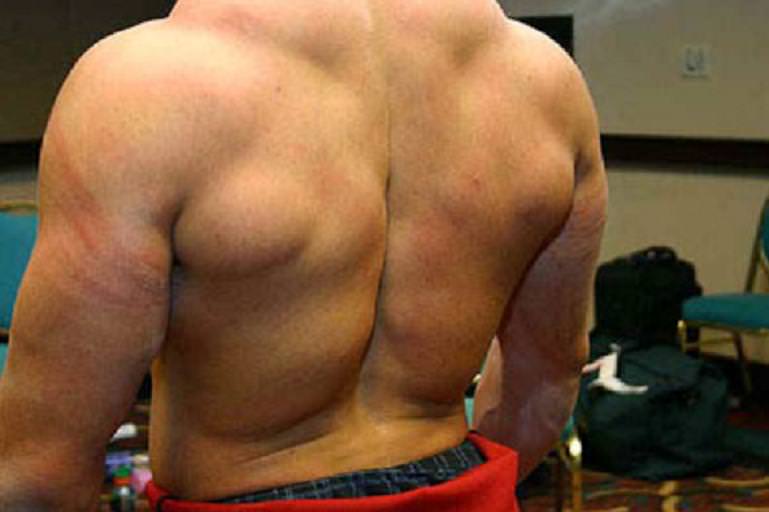One of The Main Reasons Why Your Upper Back Isn’t Growing

I often talk on this site about how important it is to have a big upper back if you want to look massive. You see, you can have a big pair of lats, but if you don’t have a big upper back then it just makes you look really small from the side view. On the other hand, if you have bad lat development while having a massive upper back then you will look look very impressive. From the side you will also look very beefy and from the back as well.
If you want to get a really big and strong upper back then its essential that you get strong at rack pull, deadlift, rowing and shrugging variations, but the common link between all of these exercises is that you need a strong lower back in order to put up some serious numbers. Also the big problem with most people is that they don’t take their lower back training really seriously!
On one end of the spectrum you have people who say stuff like “my lower back gets enough stimulation from squats and deadlifts” and on the other end you have people who actually do direct lower back work, but they will just use their bodyweight for high reps on back extensions at the end of session without taking progressive overload into account.
Sorry to break it to you, but if you want a stronger lower back then its only logical that you train it directly and with some intensity as well. Do you have to do extremely low reps with one rep maxes on back extensions? Of course not, but you do have to get stronger overtime and you need to stop babying your lower back for the most part!
Pete Rubish has one of the strongest lower backs out there and as you can see he takes his lower back training very seriously.

As a result, Pete is able to go extremely heavy on rowing and deadlifting variations because his lower back is not a limiting factor anymore and he has even said it countless times that his lower back is very strong.


What is he now rewarded with? A HUGE upper back!

Pete isn’t the only lifter doing heavy direct lower back work either, in fact a lot of powerlifters train their lower backs directly several times per week with heavy weight in order to strengthen, hypertrophy and prevent injuries in that area!
So back to you readers, if you find that you aren’t rowing or deadlifting a lot of weight because your numbers have stalled for the past few months then its about time that you give your lower back the respect that it deserves! Don’t make the same mistake that I made because there was a certain point where I was really slacking on it and it costed me a lot of strength and size. A strong lower back won’t only help you with getting a bigger back, but it will also help you lift more weight on squats, overhead presses and other standing exercises. Speaking of standing exercises, you won’t even need to use a belt if you have a strong lower back and core (I will talk more about direct ab/oblique work in another future article). So direct lower back work will keep you in the lifting game for a longer period of time which sounds pretty good if you ask me.
Another big benefit to direct lower back work is that it also hits the glutes and hamstrings extremely hard and if you know anything about this site its that I take glute training very seriously. The glutes make you very strong while also making your lower body look absolutely massive.
The last thing that I want to talk about is how I like to do my direct lower back work as far as the exercises are concerned. I like to do a ton of variations of:
-Horizontal Back Extensions (barbel, double leg, single leg, bands, Zercher..etc)
-45 Degree Back Extensions (barbel, double leg, single leg, bands, Zercher..etc)
-Reverse Hypers (double and single leg, bands…etc)
-Glute Ham Raises (Bands, straight weight..etc)
As far as the rep ranges are concerned, if you follow a system where you have Intensity, light and volume days in your programming then I would do something like this at the end of all of my workouts:
Intensity Days: Barbel Back Extensions 3 x 6-8
Light Days: Back Extensions (plate on chest)/Single Leg Back Extensions 3-5 x 30-50
Volume Days: Banded Back Extensions 3-4 x 15-20
There are literally hundreds of ways to demonstrate how to program your lower back training and this was just a rough example. I want you to also remember that its important to rotate variations of your lower back training around. Luckily for you there are countless variations for you to choose from.

CONCLUSION
I hope that I got my point across with this article on the fact that you should be incorporating direct lower back training several times per week with a variety of different exercises and rep ranges in order to bring up your posterior chain, get a stronger lower back for big compound lifts and to reduce injuries.Stop always focusing on what you are good at, start focusing on your weaknesses and the rest will fall into place.
